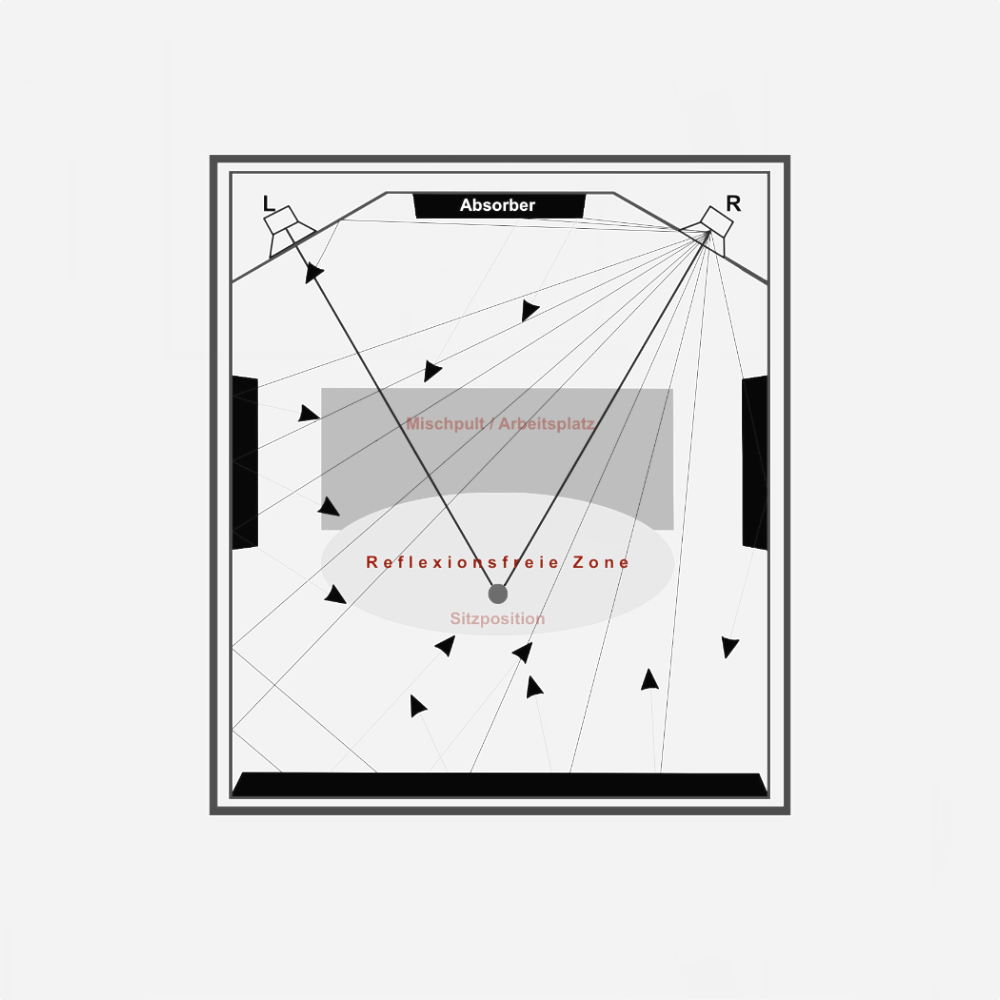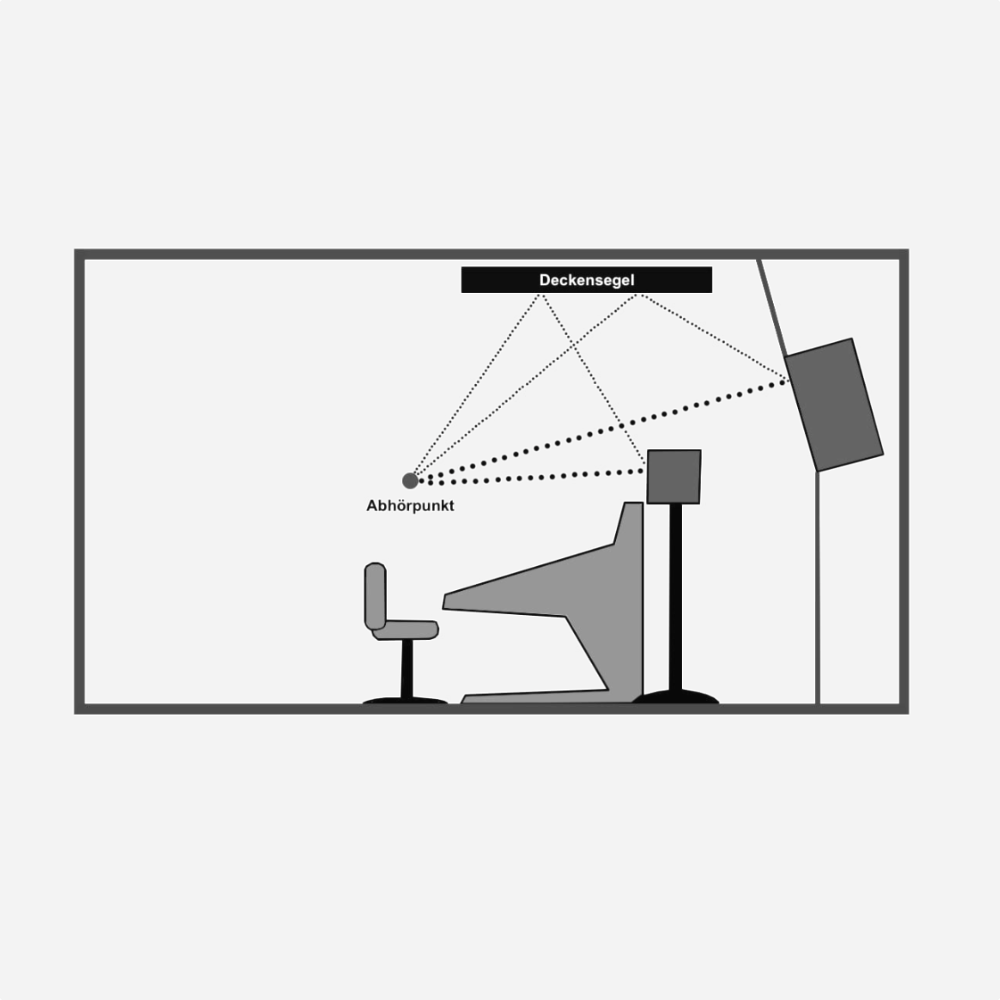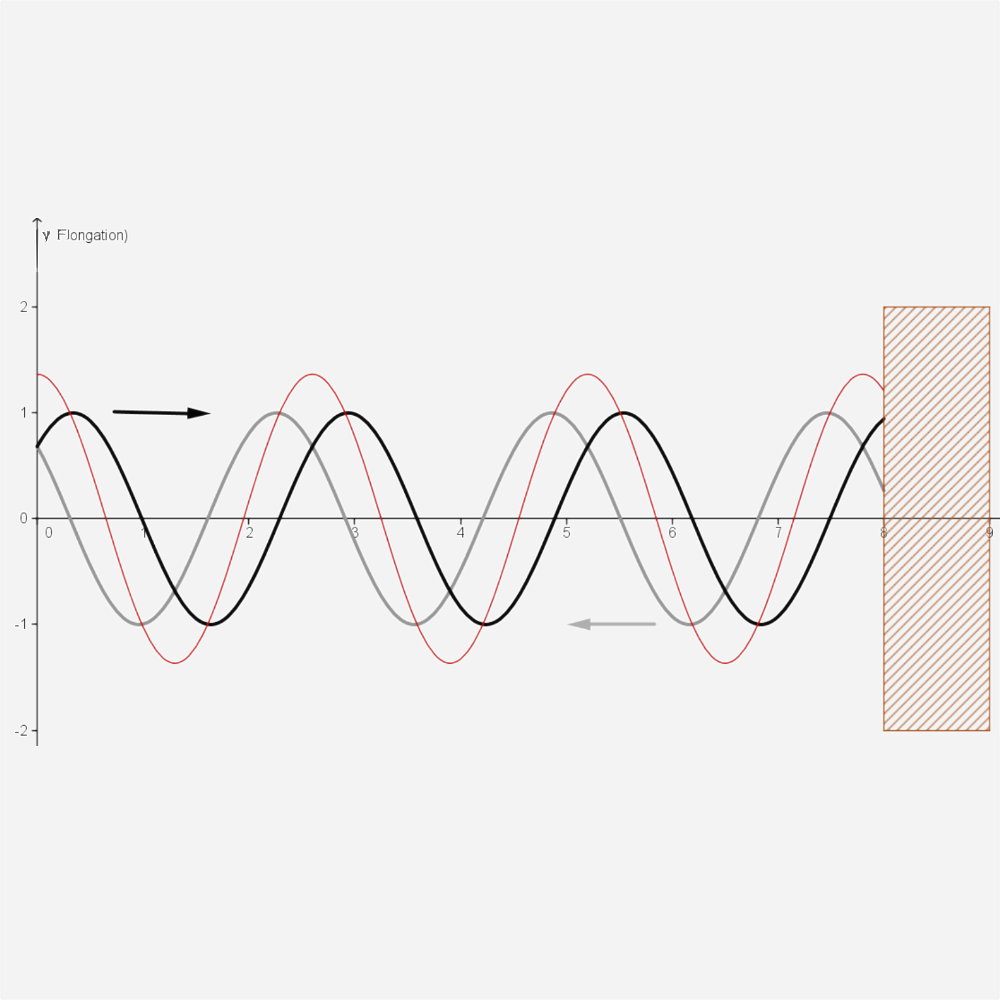Designing a room's geometry
When planning a studio, it is important to be aware in advance that the normal rectangular room is not the most favorable shape. Much better are rooms with sloping walls, which are able to prevent room modes from occurring between parallel walls in the first place. Rooms can also be designed to direct early reflections away from the listening position. In this case, one speaks of a "Reflection Free Zone". However, sloped walls cost space, and such rooms may not be easily accommodated. In addition, cavities are created that, in the worst case, have to remain completely unused, or can only represent small storage chambers. In our "Studio Acoustics" block section, we write exclusively of the "listening position" and not of the "listening point". This is due to the fact that one has to consider the reflections in a certain area around the listening point. If you would pay attention to them only at one single point in the room, only this point would be acoustically optimized. In practice, however, work is done in a certain area around the desk instead of only a single point. In order to arrive at a usable floor plan of the control room, another basic consideration must be made: Is the room to be used for stereo or for surround mixes? For stereo, you can simply divide it into a "front area" and a "rear area". With surround, all directions are consistent and must be included in the planning accordingly.
ITD-Gap and first reflections
The sound field consists of a direct signal, some first reflections and the diffuse reverberation. The first reflections are important for a good localization of the phantom sound sources and for the imaging fidelity of the monitoring system. Under no circumstances should one of these reflections reach the listening position within the first 10ms after the direct signal. In this context, one also speaks of the so-called ITD gap (Initial Time Delay Gap) - i.e. a time pause between the direct signal and the first reflection arriving at the monitoring position.
There are two ways to create the ITD gap:
- Disturbing reflections are attenuated by absorptive materials.
If reflections have been diverted away, one should consider where they occur next. If they arrive at the listening position via another reflection, the time delay or the detour distance should be checked. Anything between 10ms and 30ms is good. Perhaps the better alternative is to absorb the diverted reflections or use diffusers to disperse them. One good solution would be to use our Diffuser QRD7 15cm depth.
Absorbing reflections
Back


